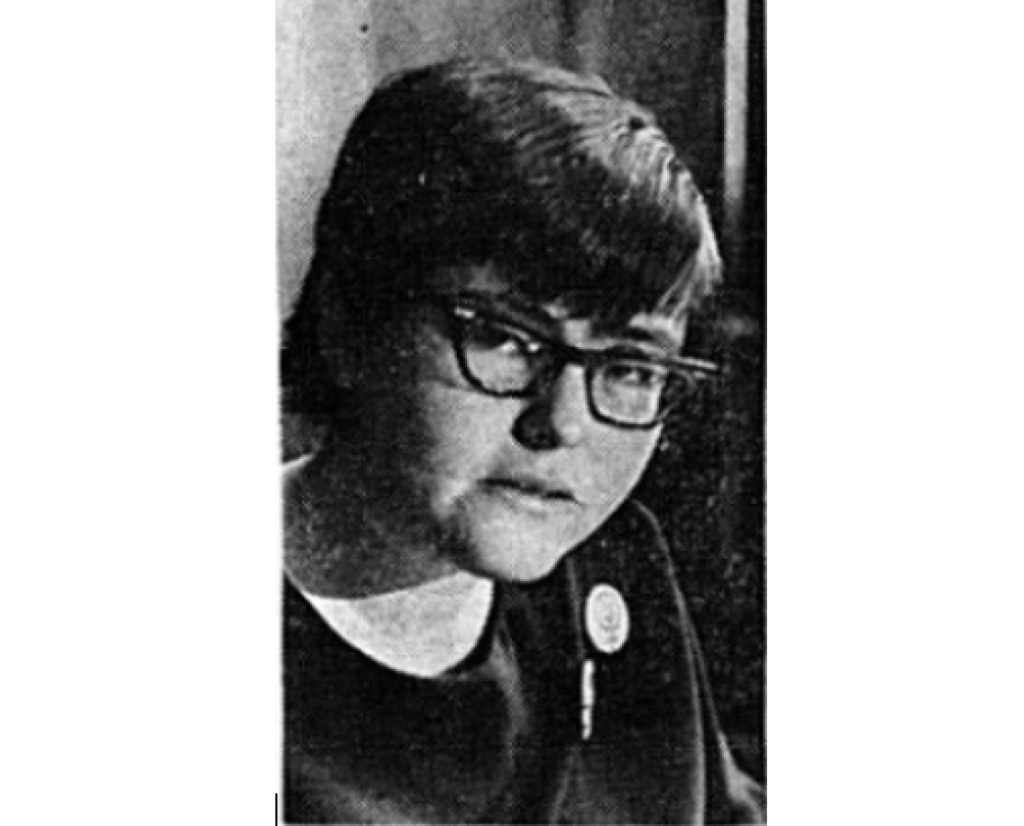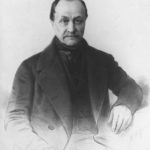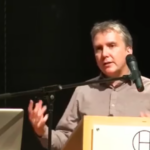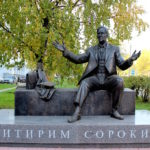
A microssociologia feminista de Jo Freeman (1973)
FREEMAN, Jo. 1973 [1972-3]. The tyranny of structurelessness. Berkeley Journal of Sociology 17:151-64.
EM DEFESA DA ESTRUTURA
If the movement is to move beyond these elementary stages of development, it will have to disabuse itself of some of its prejudices about organization and structure. There is nothing inherently bad about either of these. They can be and often are misused, but to reject them out of hand because they are misused is to deny ourselves the necessary tools to further development. We need to understand why “structurelessness” does not work. (Freeman 1973:152)
TODO GRUPO TEM ALGUMA ESTRUTURA
Contrary to what we would like to believe, there is no such thing as a “structureless” group. Any group of people of whatever nature, coming together for any length of time, for any purpose, will inevitably structure itself in some fashion. The structure may be flexible, it may vary over time, it may evenly or unevenly distribute tasks, power and resources over the members of the group. But it will be formed regardless of the abilities, personalities or intentions of the people involved. (Freeman 1973:152)
A IDEIA DE AUSÊNCIA DE ESTRUTURA MASCARA ESTRUTURAS INFORMAIS
the idea [of structurelessness] becomes a smoke screen for the strong or the lucky to establish unquestioned hegemony over others. This hegemony can be easily established because the idea of “structurelessness” does not prevent the formation of informal structures, but only formal ones. (Freeman 1973:152)
Thus, “structurelessness” becomes a way of masking power, and within the women’s movement it is usually most strongly advocated by those who are the most powerful (whether they are conscious of their power or not). The rules of how decisions are made are known only to a few and awareness of power is curtailed to those who know the rules, as long as the structure of the group is informal. (Freeman 1973:152)
ESTRUTURAS FORMAIS FAVORECEM A PARTICIPAÇÃO INDIVIDUAL
For everyone to have the opportunity to be involved in a given group and to participate in its activities the structure must be explicit, not implicit. The rules of decision-making
must be open and available to everyone, and this can happen only if they are formalized. This is not to say that formalization of a group structure will destroy the informal structure. It usually doesn’t. But it does hinder the informal structure from having predominant control and makes available some means of attacking it. (Freeman 1973:152-3)
ESTRUTURAS FORMAIS, INFORMAIS e ELITES
We cannot decide whether to have a structured or structureless group; only whether or not to have a formally structured one. Therefore, the word will not be used any longer except to refer to the idea it represents. Unstructured will refer to those groups which have not been deliberately structured in a particular manner. Structured will refer to those which have. A structured group always has a formal structure, and may also have an informal one. An unstructured group always has an informal, or covert, structure. It is this informal structure, particularly in unstructured groups, which forms the basis for elites. (Freeman 1973:153)
ELITES (redes informais de amizade)
Elites are not conspiracies. Seldom does a small group of people get together and deliberately try to take over a larger group for its own ends. Elites are nothing more and nothing less than groups of friends who also happen to participate in the same political activities. They would probably maintain their friendship whether or not they were involved in political activities; they would probably be involved in political activities whether or not they maintained their friendships. It is the coincidence of these two which creates elites in phenomena and makes them so difficult to break. (Freeman 1973:154)
These friendship groups function as networks of communication outside any regular channels for such communication that may have been set up by a group. If no channels are set up, they function as the only networks of communication. (Freeman 1973:154)
Some groups, depending on their size, may have more than one such informal communications network. Networks may even overlap. When only one such network exists, it is the elite of an otherwise unstructured group, whether the participants in it want to be elitists or not. If it is the only such network in a structured group it may or may not be an elite depending on its composition and the nature of the formal structure. If there are two or more such networks of friends, they may compete for power within the group thus forming factions, or one may deliberately opt out of the competition leaving the other as the elite. In a structured group, two or more such friendship networks usually compete with each other for formal power. This is often the healthiest situation. The other members are in a position to arbitrate between the two competitors for power and thus are able [155] to make demands on the group to whom they give their temporary allegiance. (Freeman 1973:154-5)
CRITÉRIOS/ESTRATÉGIAS de INCLUSÃO na ELITE
As the movement has changed through time, marriage has become a less universal criterion for effective participation [in the elite network], although all informal elites still establish standards by which only women who possess certain material or personal characteristics may join. (Freeman 1973:155)
The characteristics prerequisite for participating in the informal elites of the movements, and thus for exercising power, concern one’s background, personality or allocation of time. They do not include one’s competence, dedication to feminism, talents or potential contribution to the movement. The former are the criteria one usually uses in determining one’s friends. The latter are what any movement or organization has to use if it is going to be politically effective. (Freeman 1973:156)
If the sorority is not politically aware enough to actively engage in this process itself, it can be started by the outsider much the same way one joins any private club. Find a sponsor, i.e., pick some member of the elite who appears to be well-respected within it and actively cultivate that person’s friendship. Eventually, she will most likely bring you into the inner circle. (Freeman 1973:156)
CRITÉRIOS DE EXCLUSÃO DA ELITE
There are also some characteristics which will almost always tag one as a “deviant” who should not be related to. They include: being too old, working full time (particularly if one is actively committed to a “career”), not being “nice,” and being avowedly single (i.e., neither actively heterosexual nor homosexual). (Freeman 1973:156)
ESTRATÉGIAS DE CRIAÇÃO e MANUTENÇÃO de ELITES
If involved from the beginning, it is importan to have as many of one’s personal friends as possible also join. If no one knows anyone else very well, then one must deliberately form friendships with a select number and establish the informal interaction patterns crucial to the creation of an informal structure. Once the informal patterns are formed they act to maintain themselves. One of the most successful tactics of maintenance is to continuously recruit new people who “fit in.” (Freeman 1973:156)
ESTRUTURAS FORMAIS FAVORECEM QUEM NÃO TEM TEMPO PARA ESTRATÉGIAS DE INCLUSÃO NAS ELITES
All of these procedures take time. So if one works full time or has a similar major commitment, it is usually impossible to join simply because there are not enough hours left to go to all the meetings and cultivate the personal relationships necessary to have a voice in the decision-making. That is why formal structures of decision-making are a boon to the overworked person. Having an established process for decision-making ensures that everyone can participate in it to some extent. (Freeman 1973:156)
ESTRUTURAS INFORMAIS NÃO SÃO INTRINSECAMENTE NEGATIVAS, MAS DOMINAM NA AUSÊNCIA DE ESTRUTURAS FORMAIS
Although this dissection of the process of elite formation within small groups has been critical in its perspective, it is not made in the belief that these informal structures are inevitably bad – merely inevitable. All groups create informal structures as a result of the interaction patterns among the members. Such informal structures can do very useful things. But only unstructured groups are totally governed by them. When informal elites are combined with a myth of “structurelessness,” there can be no attempt to put limits on the use of power. It becomes capricious. (Freeman 1973:157)
DUAS CONSEQUÊNCIAS POTENCIALMENTE NEGATIVAS DO DOMÍNIO DE ESTRUTURAS INFORMAIS (o grupo vira uma sororidade regido por laços de amizade; elites não se responsabilizam pelo grupo)
This has two potentially negative consequences of which we should be aware. The first is that the informal structure of decision-making will be much like a sorority: one in which people listen to others because they like them, not because they say significant things. As long as the movement does not do significant things this does not much matter. But if its development is not to be arrested at this preliminary stage, it will have to alter this trend. The second is that informal structures have no obligation to be responsible to the group at large. Their power was not given to them; it cannot be taken away. Their influence is not based on what they do for the group; therefore, they cannot be directly influenced by the group. This does not necessarily make informal structures irresponsible. Those who are concerned with maintaining their influence will usually try to be responsible. The group simply cannot compel such responsibility; it is dependent on the interests of the elite. (Freeman 1973:157)
AS 3 TÉCNICAS ESTRUTURADAS DE SONDAGEM DE OPINIÃO (voto/referendo; questionário/survey; eleição de representante/porta-voz)
Only three techniques have ever been developed for establishing mass group opinion: the vote or referendum, the public opinion survey questionnaire and the selection of group spokespeople at an appropriate meeting. (Freeman 1973:157)
GRUPOS SEM PORTA-VOZES FORMAIS ACABAM ORIGINANDO PORTA-VOZES INFORMAIS
because there are no official spokespeople nor any decision-making body the press can interview when it wants to know the movement’s position on a subject, these women are perceived as the spokespeople. Thus, whether they want to or not, whether the movement likes it or not, women of public note are put in the role of spokespeople by default. (Freeman 1973:158)
2 CONSEQUÊNCIAS NEGATIVAS DO “STAR SYSTEM” (o grupo não tem o poder de definir formalmente seus próprios porta-vozes; e porta-vozes informais acabam sendo rejeitadas pelo grupo e, consequentemente, rejeitando-o também)
This has certain negative consequences for both the movement and the women labeled “stars.” (1) Because the movement didn’t put them in the role of spokesperson, the movement cannot remove them. The press put them there and only the press can choose not to listen. The press will continue to look to “stars” as spokeswomen as long as it has no official alternatives to go to for authoritative statements from the movement. The movement has no control in the selection of its representatives to the public as long as it believes that it should have no representatives at all. (2) Women put in this position often find themselves viciously attacked by their sisters. This achieves nothing for the movement and is painfully destructive of the individuals involved. Such attacks only result in either the woman leaving the movement entirely – often bitterly alienated – or in her ceasing to feel responsible to her “sisters.” She may maintain some vaguely defined loyalty to the movement but she is no longer susceptible to pressures from other women in it. One cannot feel responsible to people who have been the source of such pain without being a masochist, and these women are usually too strong to bow to that kind of personal pressure. Thus the backlash to the “star” system, in effect, encourages the very kind of individualistic non-responsibility that the movement condemns. By purging a sister as a “star,” the movement loses whatever control it may have had over the person, who then becomes free to commit all of the individualistic sins of which she has been accused. (Freeman 1973:158)
FALARxFAZER
Unstructured groups may be very effective in getting women to talk about their lives; they aren’t very good for getting things [159] done. (Freeman 1973:158-9)
GRUPOS SEM ESTRUTURA ACABAM REDUZIDOS A GRUPOS INFORMAIS DE AMIGAS
Some groups have turned themselves into local action projects, if they do not involve too many people, and work on a small scale. But this form restricts movement activity to the local level: it cannot be done on the regional or national level. Also, to function well the groups must usually pare themselves down to that informal group of friends who were running things in the first place. This excludes many women from participating. As long as the only way women can participate in the movement is through membership in a small group, the non-gregarious are at a distinct disadvantage. As long as friendship groups are the main means of organizational activity, elitism becomes institutionalized. (Freeman 1973:159)
OBJETIVOS/PROJETOS PRÁTICOS SÃO NECESSÁRIOS PARA QUE O GRUPO NÃO CAIA NA HOMOFILIA PATOLÓGICA
For those groups which cannot find a local project to devote themselves to, the mere act of staying together becomes the reason for their staying together. When a group has no specific task (and consciousness-raising is a task), the people in it turn their energies to controlling others in the group. This is not done so much out of a malicious desire to manipulate others (though sometimes it is) as out of a lack of anything better to do with their talents. Able people with time on their hands and a need to justify their coming together put their efforts into personal control, and spend their time criticizing the personalities of the other members in the group. Infighting and personal power games rule the day. (Freeman 1973:159)
When a group is involved in a task, people learn to get along with others as they are and to subsume personal dislikes for the sake of the larger goal. There are limits placed on the compulsion to remold every person in our image of what they should be. (Freeman 1973:160)
GRUPOS SEM ESTRUTURA PERDEM SEUS MEMBROS MAIS ENGAJADOS (mas excluídos da elite) PARA GRUPOS MAIS ESTRUTURADOS
Many turn to other political organizations to give them the kind of structured, effective activity that they have not been able to find in the women’s movement. Thus, those political organizations which view women’s liberation as only one issue among many, find the women’s movement a vast recruiting ground for new members. […] The movement itself provides no outlets for their new ideas and energies. (Freeman 1973:160)
EM BUSCA DO MEIO-TERMO ENTRE DOMINAÇÃO e INEFICÁCIA
If the movement continues to deliberately not select who shall exercise power, it does not thereby abolish power. All it does is abdicate the right to demand that those who do exercise power and influence be responsible for it. If the movement continues to keep power as diffuse as possible because it knows it cannot demand responsibility from those who have it, it does prevent any group or person from totally dominating. But it simultaneously insures that the movement is as ineffective as possible. Some middle ground between domination and ineffectiveness can and must be found. (Freeman 1973:162)
7 PRINCÍPIOS DE ESTRUTURAÇÃO DEMOCRÁTICA (delegação de autoridades específicas; expectativa de que autoridades específicas sejam responsáveis pelo grupo; ampla distribuição de autoridades; rodízio adequado de responsabilidades; valorização de habilidades na distribuição de responsabilidades; ampla difusão de informação; acesso igualitário a recursos)
there are some principles we can keep in mind that are essential to democratic structuring and are politically effective also: […] 1. Delegation of specific authority to specific individuals for specific tasks by democratic procedures. […] If people are selected to do a task, preferably after expressing an interest or willingness to do it, they have made a commitment which cannot so easily be ignored. […] 2. Requiring all those to whom authority has been delegated to be responsible to those who selected them. This is how the group has control over people in positions of authority. Individuals may exercise power, but it is the group that has ultimate say over how the power is exercised. […] 3. Distribution of authority among as many people as is reasonably possible. This prevents monopoly of power and requires those in positions of authority to consult with many others in the process of exercising it. It also gives many people the opportunity to have responsibility for specific tasks and thereby to learn different skills. […] 4. Rotation of tasks among individuals. Responsibilities which are held too long by one person, formally or informally, come to be seen as that person’s “property” and are not easily relinquished or controlled by the group. Conversely, if tasks are rotated too frequently the individual does not have time to learn her job well and acquire the sense of satisfaction of doing a good job. […] 5. Allocation of tasks along rational criteria. […] Ability, interest and responsibility have got to be the major concerns in such selection. People should be given an opportunity to learn skills they do not have, but this is best done through some sort of “apprenticeship” program rather than the “sink or swim” method. Having a responsibility one can’t handle well is demoralizing. […] 6. Diffusion of information to everyone as frequently as possible. Information is power. Access to information enhances one’s power. […] The more one knows about how things work, the more politically effective one can be. […] 7. Equal access to resources needed by the group. […] A member who maintains a monopoly over a needed resource (like a printing press or a darkroom owned by a husband) can unduly influence the use of that resource. Skills and information are also resources. Members’ skills can be equitably available only when members are willing to teach what they know to others. (Freeman 1973:163-4)
ESTRUTURA PERMITE AO GRUPO CONTROLAR “ESTRELAS” INDIVIDUAIS E ELITES
When these principles are applied, they insure that whatever structures are developed by different movement groups will be controlled by and responsible to the group. The group of people in positions of authority will be diffuse, flexible, open and temporary. They will not be in such an easy position to institutionalize their power because ultimate decisions will be made by the group at large. The group will have the power to determine who shall exercise authority within it. (Freeman 1973:164)





 LaSPA is located at the Institute of Philosophy and Human Sciences (
LaSPA is located at the Institute of Philosophy and Human Sciences (